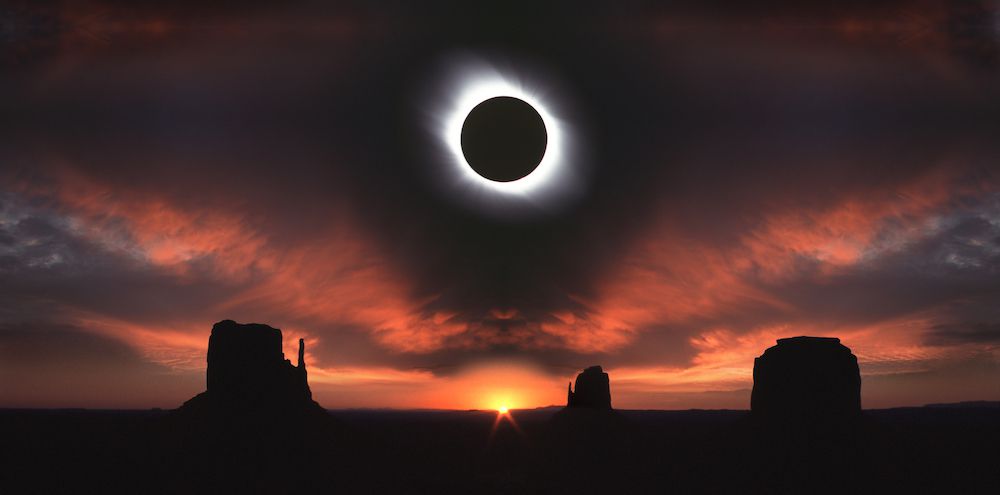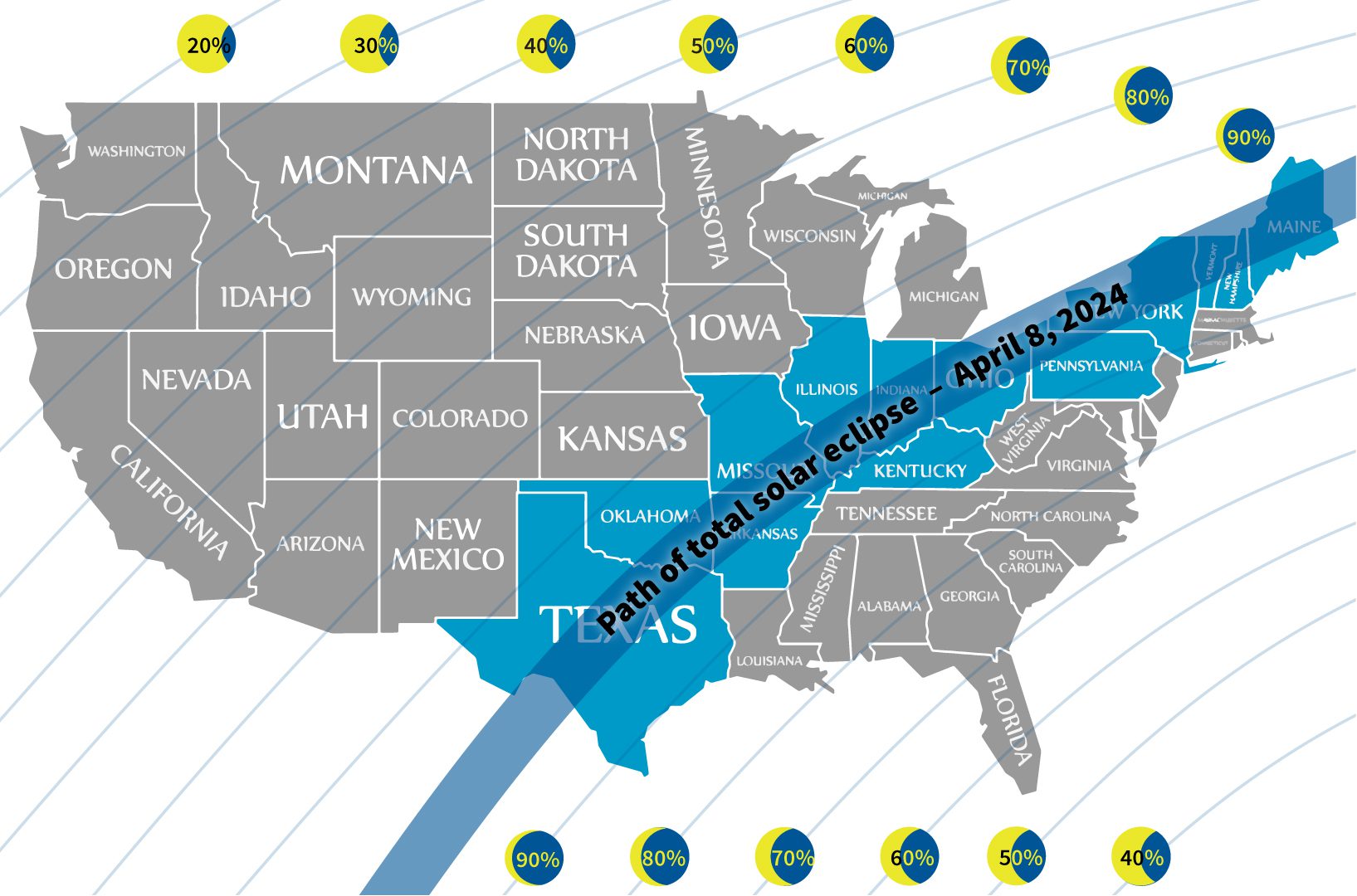Safely Experiencing the Total Solar Eclipse

On Monday, April 8th, a total solar eclipse will cross North America. According to NASA, its path will pass over Mexico, the United States, and Canada. Weather permitting the first location in continental North America that will experience totality is Mexico's Pacific coast at around 11:07 a.m. PDT. Below is the expected path of the eclipse.

photo courtesy of Prevent Blindness.org
Even if you are not in the path of totality, every contiguous state in the United States will witness at least a partial solar eclipse. While this is an exciting event, it's important not to forget the safety measures that should be followed.
According to NASA, "Except during the brief total phase of a total solar eclipse, when the Moon completely blocks the Sun's bright face, it is not safe to look directly at the Sun without specialized eye protection for solar viewing. Viewing any part of the bright Sun through a camera lens, binoculars, or a telescope without a special-purpose solar filter secured over the front of the optics will instantly cause severe eye injury." The tips below will allow you to safely enjoy the upcoming eclipse:
- If watching a partial or annular solar eclipse directly with your eyes, you MUST look through safe solar viewing glasses or a safe handheld solar viewer at ALL TIMES.
- Eclipse glasses are NOT regular sunglasses; regular sunglasses, no matter how dark, are not safe for viewing the Sun.
- ALWAYS inspect your eclipse glasses or handheld viewer before use; if torn, scratched, or otherwise damaged, discard the device.
- ALWAYS supervise children using solar viewers.
- DO NOT look at the Sun through a camera lens, telescope, binoculars, or any other optical device while wearing eclipse glasses or using a handheld solar viewer - the concentrated solar rays will burn through the filter and cause severe eye injury.
- If you don't have eclipse glasses or a handheld solar viewer, you can use an indirect viewing method, which does not involve looking directly at the Sun.
- DO NOT use eclipse glasses or handheld viewers with cameras, binoculars, or telescopes. Those require different types of solar filters.
- Skin Safety:
- Even during a partial or annular eclipse, or during the partial phases of a total eclipse, the Sun will be very bright. If you are watching an entire eclipse, you may be in direct sunlight for hours. Remember to wear sunscreen, a hat, and protective clothing to prevent skin damage.

photo courtesy of eclipse.aas.org
